He is one of the best observers of our society. After The French Archipelago And France before our eyes (with Jean-Laurent Cassely), Jérôme Fourquet returns with French metamorphoses (Threshold). The political scientist, director of the Opinion and corporate strategies department of Ifop, dissects through infographics the transformations that our country has been going through for several decades. Through the curves, maps and pie charts, the great seesaw of the last forty years emerges. We are publishing exclusive extracts from it, along with the author’s interview.
Evolution of the number of single-parent families
© / Anne Bullat-Piscaglia and Guillaume Bullat/Seuil
While, until the mid-1980s, the proportion of single-parent families had remained stable, it began to increase very rapidly from the 1990s. In 2018, 24% of families with child(ren) were now single-parent, i.e. a proportion twice that of 1990. This situation, which mainly affects women – 85% of single-parent families are made up of women living alone with their child(ren) – constitutes a major factor in the demographic and sociological landscape. contemporary.
Births outside marriage
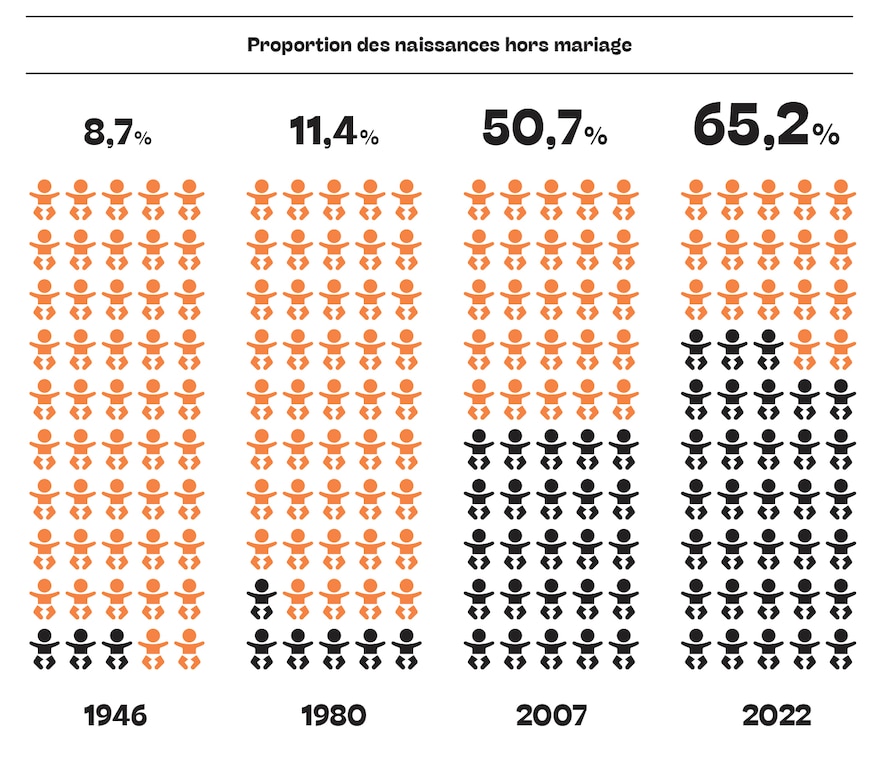
© / Anne Bullat-Piscaglia and Guillaume Bullat/Seuil
In less than forty years, an extraordinary situation has become completely commonplace and has become largely the majority. This time scale corresponds more or less to the duration of a teacher’s career: starting work in the early 1980s, a teacher taught classes in which almost all the children had married parents, whereas, just before he left National Education, the last class entrusted to him included 6 out of 10 children born out of wedlock!
The fragmentation of audiences
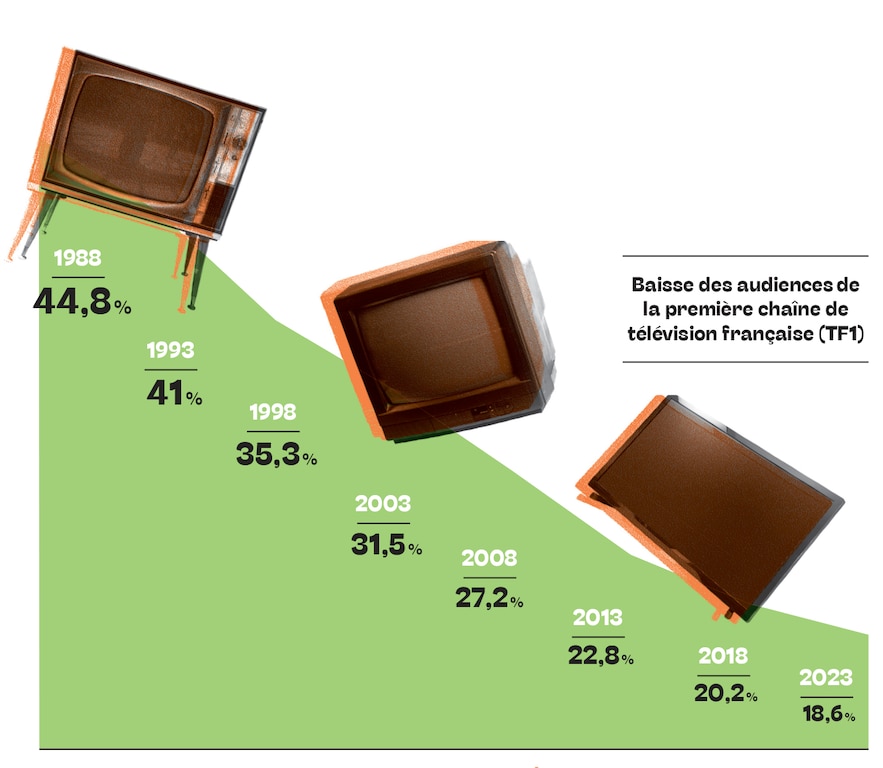
© / Adwo-Michael Burrell-liew hooi feng/Alamy/Seuil – Freepik/Seuil – Anne Bullat-Piscaglia and Guillaume Bullat/Seuil
Alongside the collapse of the Church and the PCF, the influence of the major mass media, which participated in the development of a common and shared vision of the world, has eroded. This is true for television and particularly for TF1. The first French television channel, it brought together millions of French people at the same time watching the same program.
A new relationship with the body
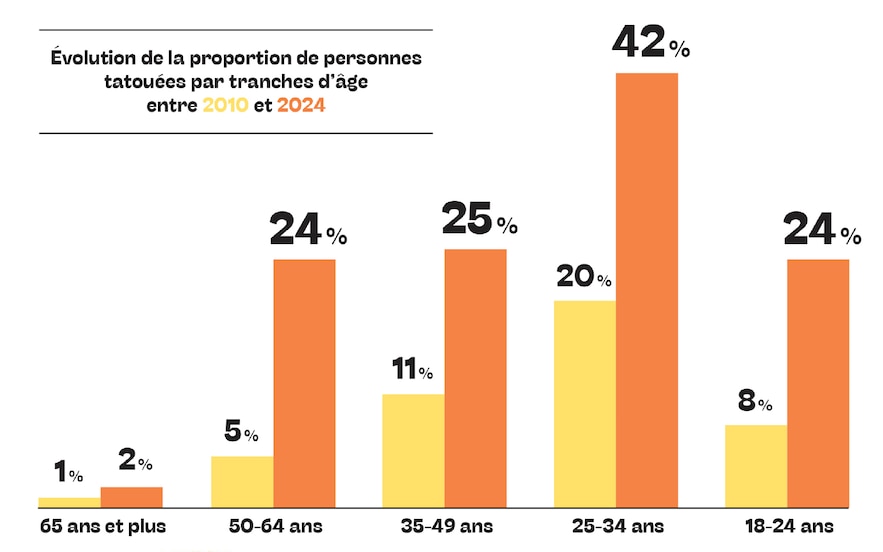
© / Adwo-Michael Burrell-liew hooi feng/Alamy/Seuil – Freepik/Seuil – Anne Bullat-Piscaglia and Guillaume Bullat/Seuil
While until the 1980s and 1990s the practice of tattooing was almost non-existent in France and the prerogative of very restricted circles (artists, travelers, convicts, sailors, soldiers, etc.), it has considerably increased. widespread since the 2000s. Tattooing is therefore now part of our daily landscape. This cultural and anthropological shift took place among the generation which entered adulthood (period during which the decision to get a tattoo occurs most often) in the 1990s. Since then, the phenomenon has further gained in intensity. , since more than a third of 18-34 year olds are now tattooed.
First names from elsewhere
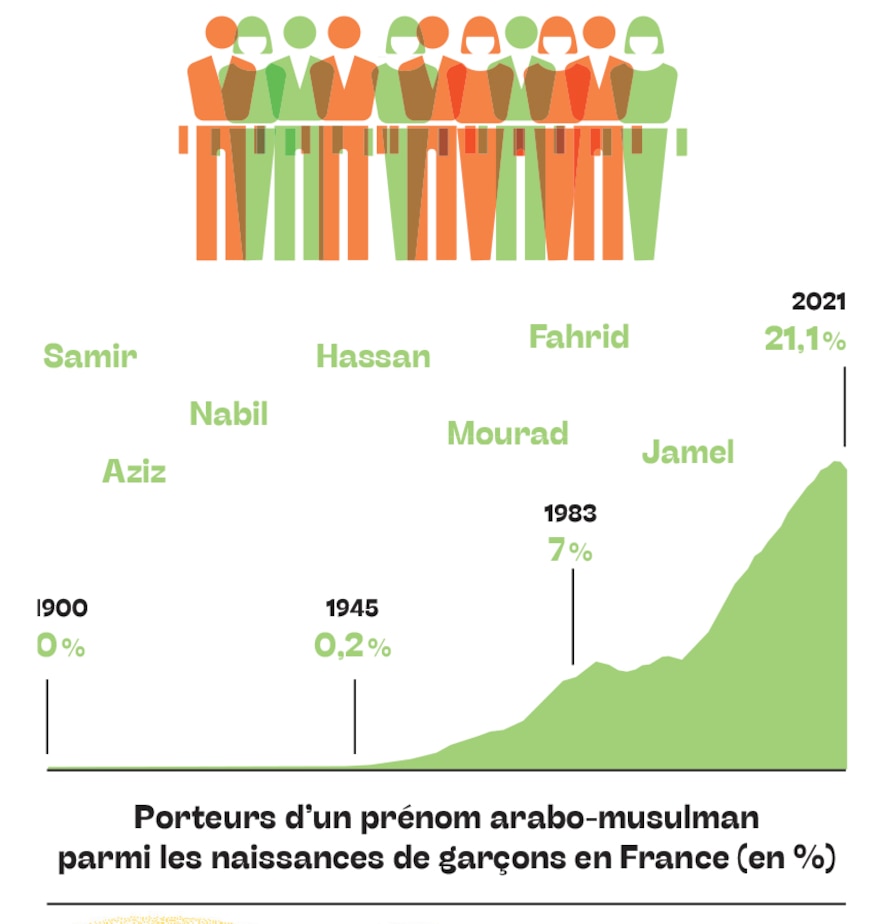
© / Adwo-Michael Burrell-liew hooi feng/Alamy/Seuil – Freepik/Seuil – Anne Bullat-Piscaglia and Guillaume Bullat/Seuil
The percentage of bearers of an Arab-Muslim first name among newborns constitutes a good indicator not only of the degree of cultural assimilation of these populations, but also of the migratory dynamics at work. Geographically, there is a significant increase in the proportion of bearers of an Arab-Muslim first name among newborns in most departments between 2001 and 2021. […]
Fueled by sustained legal and illegal immigration, the dynamic that has been underway over the past thirty years has already profoundly transformed the cultural physiognomy of France, and thresholds have been crossed in all strata of departments. This spread of immigration throughout the territory is coupled with a diversification of the origins of migrants. While a very significant part of the flows came from the Maghreb from the 1960s to the 1990s, other nationalities are represented today: West African countries, but also from the Indian subcontinent, China, Chechnya, Albania …
Beauval pandas outclass Chambord
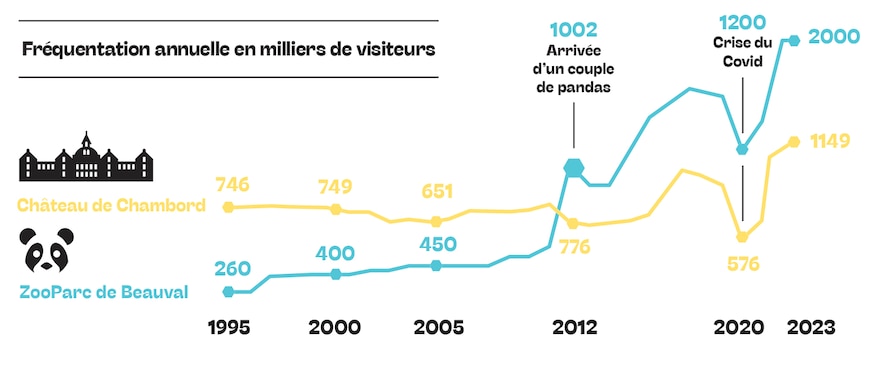
© / Anne Bullat-Piscaglia and Guillaume Bullat/Seuil
Traditionally, the tourism industry was structured around historic sites or monuments or remarkable landscapes or regions. Theme parks broke with this logic, since they were established ex nihilo and their activities made it possible to bring a large audience together towards places which were not known to have high tourist potential. We see the same phenomenon with certain zoos and animal parks. This is the case of the Beauval ZooParc, in the Loir-et-Cher department. Created in 1980 around a few hundred birds, the park gradually grew in size by expanding its perimeter and expanding its offering (notably with the arrival of a pair of pandas, the park’s flagship attraction). It has gone from around 250,000 visitors per year in the mid-1990s to 2 million today, greatly outclassing the Château de Chambord, which was until then the main tourist attraction in the department, since the arrival of the pandas.
How French people vote based on where they live

© / Anne Bullat-Piscaglia and Guillaume Bullat/Seuil
When we move away from the heart of large cities, the Macron vote gradually diminishes and the Le Pen vote gains strength. Thus, as in previous elections, in 2022 we again observed a correlation between the urbanity gradient and the intensity of the RN vote. On the national level, this vote increased from 15.9% on average within 10 kilometers of the heart of an urban area of 200,000 inhabitants to 22.6% within a radius of 10 to 20 kilometers then to 25.6% between 20 and 30 kilometers.
The climax was reached between 30 and 60 kilometers, with an average score of nearly 28% in what can be described as large peri-urban areas. […] The Macron vote followed an opposite trajectory with a peak in the heart of large urban areas and a low point in the large peri-urban areas, even if in these areas he enjoyed significant support among retirees. Another important point of support for Emmanuel Macron: the expatriates, who massively supported him.
.
